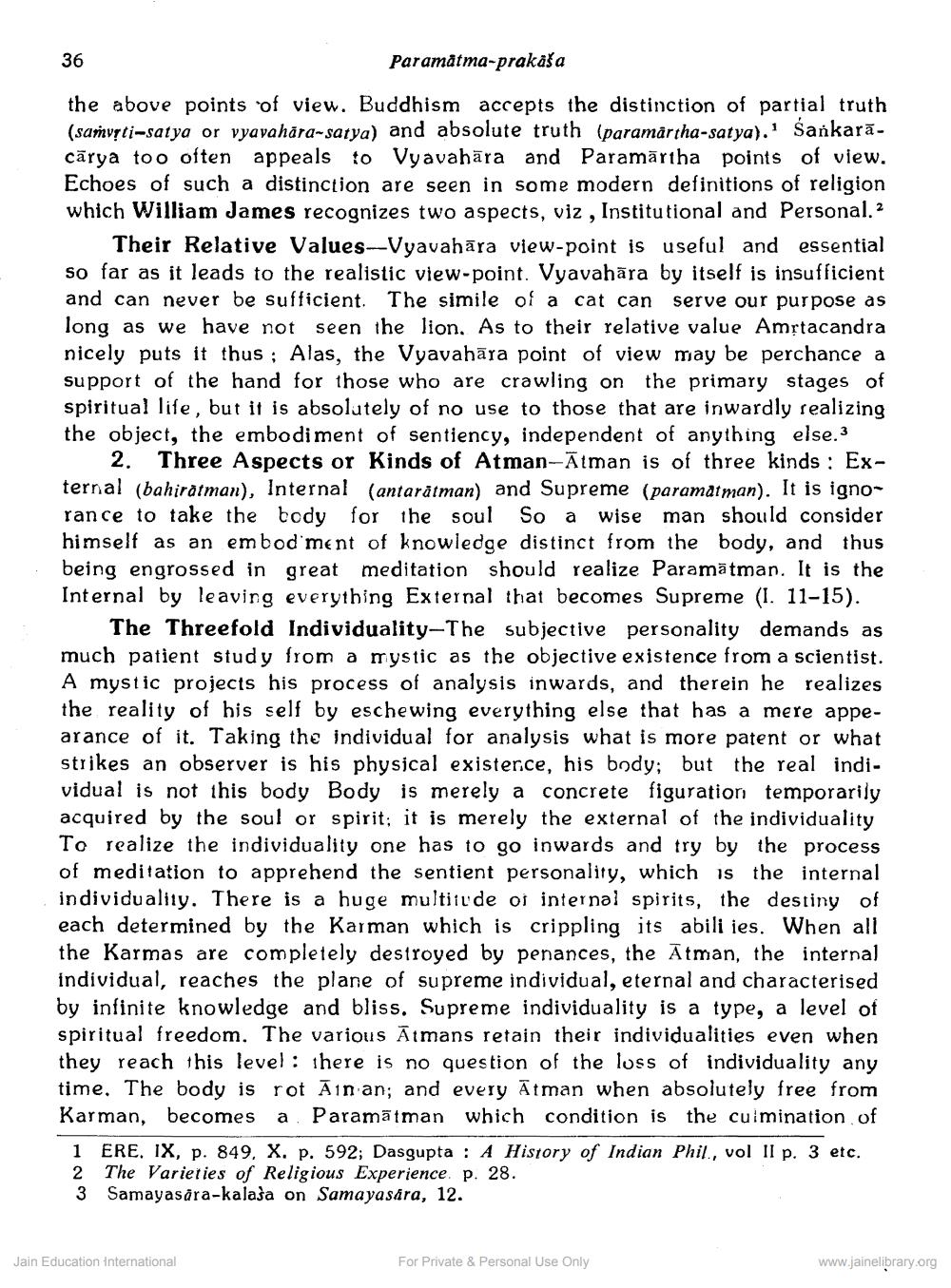________________
36
Paramatma-prakala
the above points of view. Buddhism accepts the distinction of partial truth. (samveti-satya or vyavahara-satya) and absolute truth (paramartha-satya). Sankaracārya too often appeals to Vyavahara and Paramartha points of view. Echoes of such a distinction are seen in some modern definitions of religion. which William James recognizes two aspects, viz, Institutional and Personal.
Their Relative Values-Vyavahara view-point is useful and essential so far as it leads to the realistic view-point. Vyavahara by itself is insufficient and can never be sufficient. The simile of a cat can serve our purpose as long as we have not seen the lion. As to their relative value Amṛtacandra nicely puts it thus: Alas, the Vyavahara point of view may be perchance a support of the hand for those who are crawling on the primary stages of spiritual life, but it is absolutely of no use to those that are inwardly realizing the object, the embodiment of sentiency, independent of anything else.3
2. Three Aspects or Kinds of Atman-Atman is of three kinds: External (bahiratman), Internal (antaratman) and Supreme (paramatman). It is ignorance to take the body for the soul So a wise man should consider himself as an embodiment of knowledge distinct from the body, and thus being engrossed in great meditation should realize Paramatman. It is the Internal by leaving everything External that becomes Supreme (I. 11-15).
The Threefold Individuality-The subjective personality demands as much patient study from a mystic as the objective existence from a scientist. A mystic projects his process of analysis inwards, and therein he realizes the reality of his self by eschewing everything else that has a mere appearance of it. Taking the individual for analysis what is more patent or what strikes an observer is his physical existence, his body; but the real individual is not this body Body is merely a Body is merely a concrete figuration temporarily acquired by the soul or spirit; it is merely the external of the individuality To realize the individuality one has to go inwards and try by the process of meditation to apprehend the sentient personality, which is the internal individuality. There is a huge multitude of internal spirits, the destiny of each determined by the Karman which is crippling its abili ies. When all the Karmas are completely destroyed by penances, the Atman, the internal Individual, reaches the plane of supreme individual, eternal and characterised by infinite knowledge and bliss. Supreme individuality is a type, a level of spiritual freedom. The various Atmans retain their individualities even when they reach this level there is no question of the loss of individuality any time. The body is rot Ain an; and every Atman when absolutely free from Karman, becomes a Paramatman which condition is the culmination of
1 ERE, IX, p. 849. X. p. 592; Dasgupta: A History of Indian Phil, vol II p. 3 etc. 2 The Varieties of Religious Experience. p. 28.
3 Samayasara-kaleda on Samayasara, 12.
Jain Education International
For Private & Personal Use Only
www.jainelibrary.org




